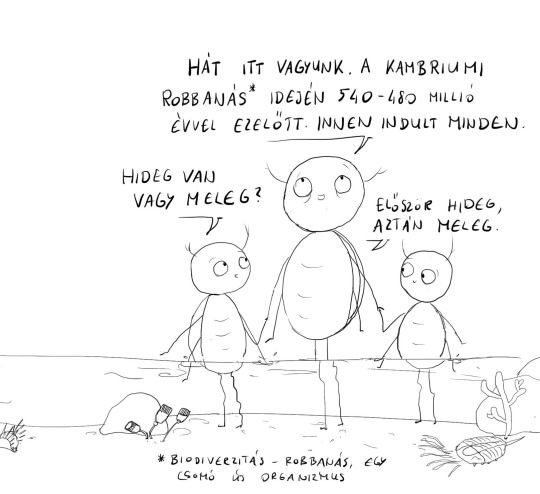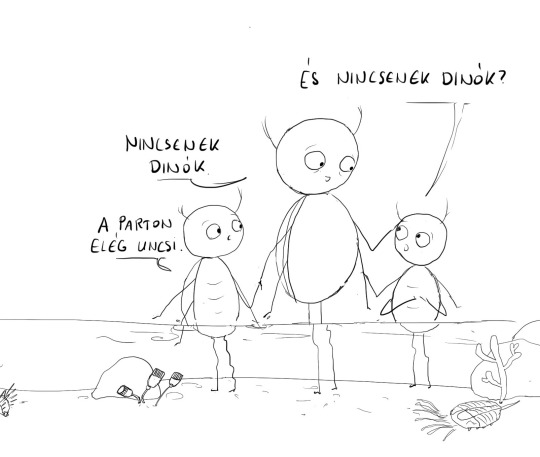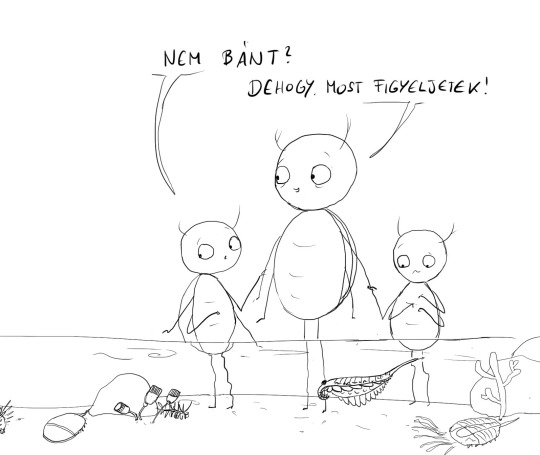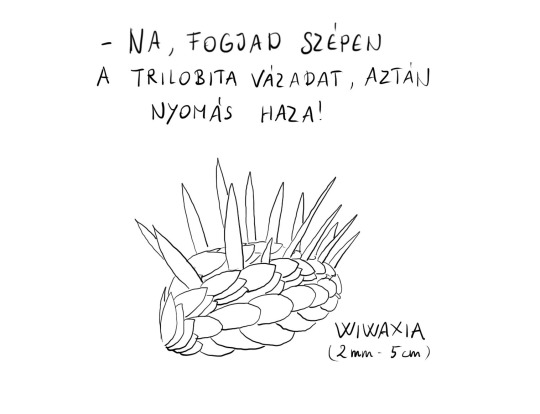#Stanleycaris hirpex
Note
have you seen the news about a ton of preserved Stanleycaris hirpex being found, with their nervous systems and brains intact? I'm certainly amazed by it and wanted to know your thoughts!!
oh FUCK, that's amazing!
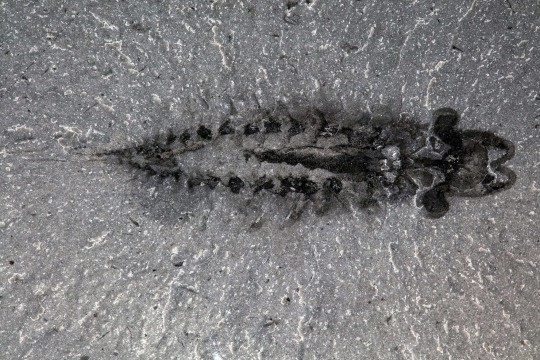
DIVULGE YOUR SECRETS, STANLEY.
1K notes
·
View notes
Photo

Radiodonts were early arthropods with specialized frontal appendages, disc-like mouths, complex compound eyes, and swimming flaps along the sides of their bodies. Once considered to be bizarre "weird wonders" of the Cambrian Explosion that represented a failed evolutionary experiment, we now know that they were actually a highly diverse and successful lineage that lasted for at least 120 million years.
While some radiodonts were the largest animals of their time periods, Stanleycaris hirpex here was one of the smallest known members of the group – although at around 10cm long (~4") it was still respectably big compared to most other Cambrian animals.
Discovered in the Canadian Burgess Shale deposits (~508 million years ago), it was originally known only from isolated frontal appendages and mouthparts, and had been assumed to be a fairly typical member of the hurdiid family. But the recent discovery of over 200 new fossils, including some exceptionally well-preserved full body specimens, has catapulted it directly from being poorly-known into now being one of the most completely known of all radiodonts.
And it had a very big surprise for us, right in the middle of its face.
It turns out that Stanleycaris had a huge third eye, unlike anything ever seen in a radiodont before. A large unpaired eye was also part of the five-eyed arrangement in opabiniids and Kylinxia, and finding a similar example in radiodonts too raises the possibility that this sort of well-developed "median eye" may have been more widespread in early arthropods than previously thought.
Along with the third eye, some of the Stanleycaris specimens preserve fine internal details of its nervous system and show that its brain was made up of two segments instead of the three seen in modern arthropods. It also had gills positioned on its underside, unlike most other radiodonts which had them on their backs.
———
Nix Illustration | Tumblr | Twitter | Patreon
#science illustration#paleontology#paleoart#palaeoblr#stanleycaris#hurdiidae#radiodont#dinocaridida#arthropod#panarthropod#invertebrate#cambrian explosion#art#look at this delightfully goofy friend#i love them#the cambrian is ALWAYS even weirder than we thought it was
508 notes
·
View notes
Text
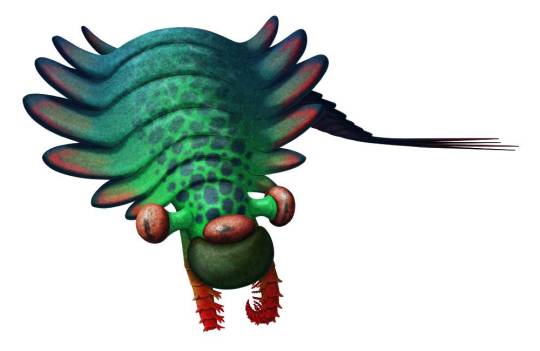
Stanleycaris
Stanleycaris — вимерлий монотипний рід радіодонтів хурдиїд, який існував у Канаді в середньому кембрії. Типовим видом є Stanleycaris hirpex. Stanleycaris був описаний з формації Стівен поблизу льодовика Стенлі сланців Берджес, були також неофіційні повідомлення про знахідки на горі Одарай. Тварина мала три ока, що раніше не зустрічалось в інших родів радіодонтів.
Повний текст на сайті "Вимерлий світ":
https://extinctworld.in.ua/stanleycaris/
#stanleycaris#cambrian#canada#north america#radiodonta#paleoart#stanleycarishirpex#art#cambrian period#fossils#paleontology#prehistoric#prehistory#animals#animal art#science#illustration#article#daily#extinct#палеоарт#палеонтологія#україна#тварини#українська мова#арт#мова#ukraine#ukrainian#канада
12 notes
·
View notes
Text
اكتشاف مخلوق بثلاثة أعين جاب المحيطات قبل 500 مليون سنة
اكتشاف مخلوق بثلاثة أعين جاب المحيطات قبل 500 مليون سنة
قد يدفع دماغ متحجر لمخلوق يشبه القريدس بثلاث عيون، والذي سبح في المحيطات قبل 500 مليون سنة، إلى إعادة التفكير في تطور الحشرات والعناكب.
ويوصف المخلوق، المسمى Stanleycaris hirpex، بأنه “مادة الكوابيس”. وكان له عينان على سيقان، وعين ثالثة في منتصف رأسه، وفم دائري رائع الشكل تصطف على جانبيه الأسنان، ومخالب أمامية مع مجموعة رائعة من الأشواك.
وعاش Stanleycaris خلال “الانفجار” الكمبري – وهي فترة تطور…

View On WordPress
0 notes
Text
Cervelli fossilizzati di Stanleycaris di 500 milioni di anni fa fanno ripensare all'evoluzione di insetti e ragni
Cervelli fossilizzati di Stanleycaris di 500 milioni di anni fa fanno ripensare all’evoluzione di insetti e ragni
Ricostruzione di una coppia di Stanleycaris hirpex; nell’individuo superiore la trasparenza dell’esterno è aumentata per mostrare gli organi interni. Il sistema nervoso è rappresentato in beige chiaro, l’apparato digerente in rosso scuro.
Il Royal Ontario Museum ha rivelato una nuova ricerca basata su un deposito di fossili che contiene il cervello e il sistema nervoso di un predatore marino di…

View On WordPress
0 notes
Text
Fossilized brain of creepy ocean creature lends new insight into evolution of insects, spiders
Fossilized brain of creepy ocean creature lends new insight into evolution of insects, spiders
TORONTO — Scientists have discovered the perfectly fossilized brain of a three-eyed prawn that swam the oceans more than half a billion years ago. Its complete central nervous system is still visible, providing unprecedented insights into the ancestors of insects, spiders and crustaceans. Named Stanleycaris hirpex, it was described as “the stuff of nightmares.” It had two…
The post Fossilized…

View On WordPress
0 notes
